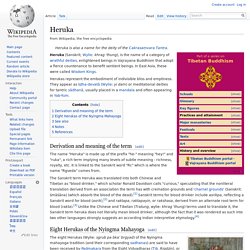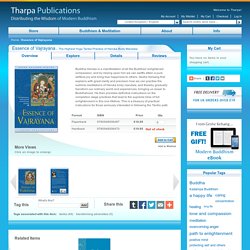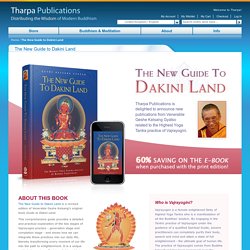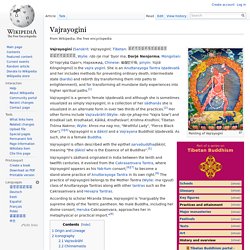

Heruka. Heruka is also a name for the deity of the Cakrasaṃvara Tantra.

Heruka (Sanskrit; Wylie: khrag 'thung), is the name of a category of wrathful deities, enlightened beings in Vajrayana Buddhism that adopt a fierce countenance to benefit sentient beings. In East Asia, these were called Wisdom Kings. Derivation and meaning of the term[edit] The name "Heruka" is made up of the prefix "he-" meaning "hey! " and "ruka", a rich term implying many levels of subtle meaning - richness, royalty, etc. Eight Herukas of the Nyingma Mahayoga[edit] The eight Herukas (Wylie: sgrub pa bka’ brgyad) of the Nyingma mahayoga tradition (and their corresponding sadhanas) are said to have been received by Padmakara from the Eight Vidyadharas (Tib.
See also[edit] Wrathful deities Notes[edit] Jump up ^ Indian Esoteric Buddhism by Ronald Davidson. pg 213Jump up ^ A Sanskrit-English dictionary By Monier Monier-Williams, Ernst Leumann, Carl Cappeller. References[edit] Khenchen Palden Rinpoche. Advanced Buddhist Meditation Book. Virtuous or non-virtuous depending upon our motivation, our body awareness itself is always neutral.

In the same way, the actions of our eye awareness can be virtuous or non-virtuous but our eye awareness itself is always neutral. Therefore, as meditation is necessarily a virtuous mind whereas our sense awarenesses are necessarily neutral, it follows that we cannot meditate with our sense awarenesses. Another reason why we cannot meditate with our sense awarenesses is that for us the direct object of meditation is the generic image of an object, and our sense awarenesses cannot perceive generic images. Moreover, although eye, ear, nose, tongue, and body awarenesses can focus on forms, sounds, smells, tastes, and tactile objects respectively, they cannot remember them. Since meditation involves remembering, or holding with mindfulness, the object for an extended period of time, the only type of awareness that we can meditate with is mental awareness.
The New Guide to Dakini Land. The New Guide to Dakini Land is a revised edition of Venerable Geshe Kelsang’s original book Guide to Dakini Land.

This comprehensive guide provides a detailed and practical explanation of the two stages of Vajrayogini practice - generation stage and completion stage - and shows how we can integrate these practices into our daily life, thereby transforming every moment of our life into the path to enlightenment. It is a unique guide to becoming a Tantric enlightened being in the modern world. Add the ebook and print edition to your cart andRECEIVE 60% OFF YOUR E-BOOK AT CHECKOUT Offer only valid if both items are included in the same checkout.Discount valid on one ebook per order.
Multiple orders allowed. The Practices of Heruka & Vajrayogini - Kadampa Buddhism. The practices of Buddha Heruka and Buddha Vajrayogini are the Highest Yoga Tantra practices ofKadampa Buddhism.

The practice of Buddha Heruka is explained in Geshe Kelsang’s book, Essence of Vajrayana. and the practice of Buddha Vajrayogini is explained in the book Guide to Dakini Land. Empowerment Before engaging in either of these practices it is necessary to receive an empowerment and instructions from a qualified Spiritual Guide. These empowerments are given every other year atInternational Kadampa Festivals, and occasionally at other events. Vajrayogini. Vajrayoginī is a generic female iṣṭadevatā and although she is sometimes visualized as simply Vajrayoginī, in a collection of her sādhanās she is visualized in an alternate form in over two thirds of the practices.[2] Her other forms include Vajravārāhī (Wylie: rdo-rje phag-mo "Vajra Sow") and Krodikali (alt.

Krodhakali, Kālikā, Krodheśvarī, Krishna Krodhini, Tibetan Tröma Nakmo; Wylie: khros ma nag mo, "Wrathful Lady", "Fierce Black One").[3][4] Vajrayoginī is a ḍākiṇī and a Vajrayana Buddhist iṣṭadevatā. As such, she is a female Buddha. Vajrayoginī is often described with the epithet sarvabuddhaḍākiṇī, meaning "the ḍākiṇī who is the Essence of all Buddhas".[5] Vajrayogini's sādhanā originated in India between the tenth and twelfth centuries.